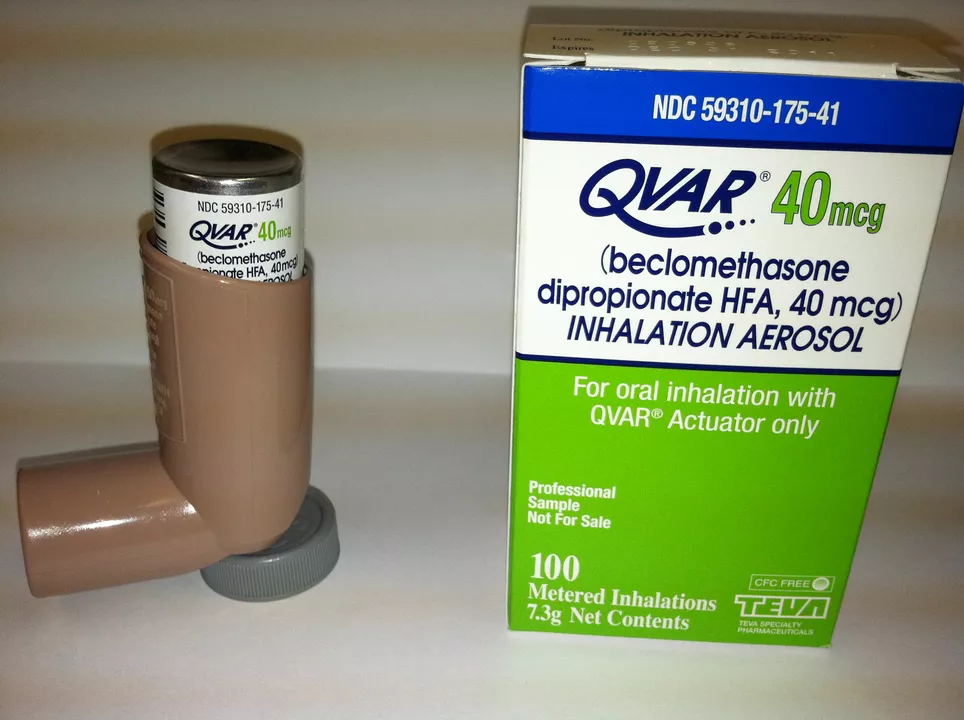Beclomethasone: What It Is and How to Use It Right
If you’ve been prescribed a spray or cream with the name beclomethasone, you might wonder what exactly it does. In short, it’s a low‑dose steroid that reduces inflammation. Doctors use it for asthma inhalers, allergic rhinitis sprays, and sometimes skin creams for eczema or psoriasis.
How Beclomethasone Works
Think of inflammation like a fire in your airways or on your skin. Beclomethasone acts like a tiny fire‑extinguisher that calms the reaction without shutting down everything else. When you inhale it, the medicine goes straight to the lungs and tells the immune cells to chill out. In a cream, it seeps into the top layers of skin, telling irritated cells to stop overreacting.
Because it’s a steroid, you won’t feel an instant “hit” like a bronchodilator does. It builds up its effect over days, so you might not notice big changes right away. That’s normal – consistency is key.
Using Beclomethasone Safely
Here are the practical steps most people find helpful:
- Follow the prescribed dose. For inhalers, it’s usually one or two puffs twice a day. For creams, a thin layer once or twice daily is enough.
- Rinse your mouth after each use. This cuts down on throat irritation and reduces the tiny chance of oral thrush.
- Don’t double up. If you miss a dose, take it as soon as you remember unless it’s almost time for the next one. Skipping an extra puff won’t help.
- Watch for side effects. Common ones include hoarseness, mild throat irritation, or a slight skin rash. If you notice severe swelling, vision changes, or unexplained weight gain, call your doctor.
- Store it properly. Keep the inhaler upright and away from heat. Creams should be in a cool, dry place with the lid tightly closed.
People often worry about steroids causing big problems, but low‑dose beclomethasone used as directed is generally safe. The real risk comes when it’s overused or combined with other strong steroids.
If you’re using a combination inhaler (beclomethasone + a bronchodilator), remember the two parts work together – the steroid keeps inflammation down, while the bronchodilator opens airways fast.
For skin applications, avoid applying on broken skin or near eyes unless your doctor says it’s okay. A pea‑size amount is usually sufficient for an affected area.
Finally, keep a short log of when you use the medication and any symptoms you notice. This makes follow‑up appointments easier and helps your doctor fine‑tune the dose if needed.
Bottom line: beclomethasone is a handy tool for controlling inflammation in both lungs and skin. Use it regularly, stick to the prescribed amount, and stay alert to any unusual signs. With that approach, you’ll get the relief you need without unnecessary worries.
Comparing beclomethasone to other corticosteroids for asthma treatment
As someone who's been researching asthma treatments, I've come across various corticosteroids options, and recently I've been comparing beclomethasone to other corticosteroids. It seems that beclomethasone is a popular choice due to its effectiveness in reducing inflammation and improving overall lung function. However, other corticosteroids like fluticasone and budesonide also appear to be quite effective for asthma management. It's essential to consult with a healthcare professional to determine the best treatment option for your specific needs. Personally, I'm considering discussing these alternatives with my doctor to ensure I'm using the most suitable corticosteroid for my asthma.
learn more